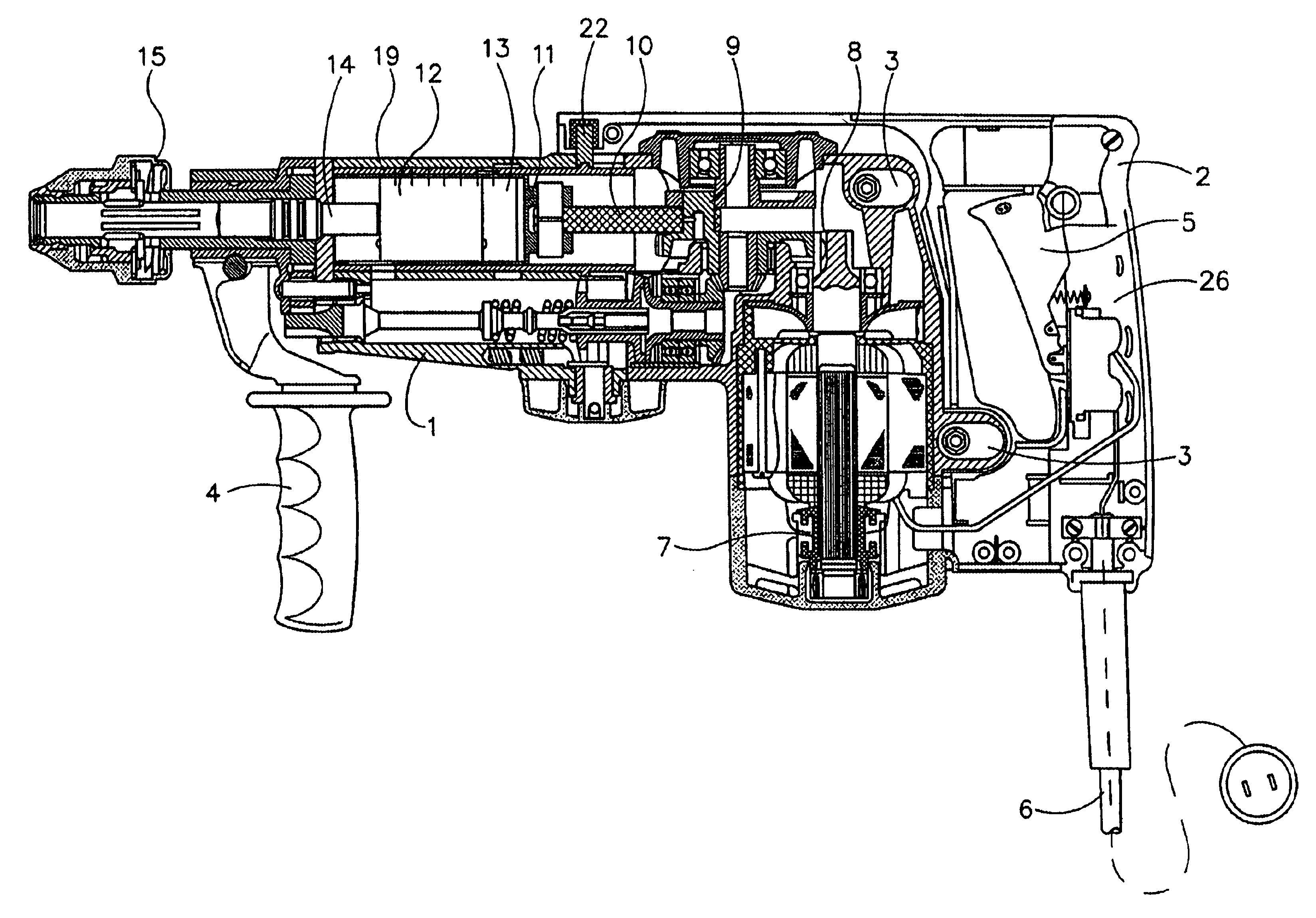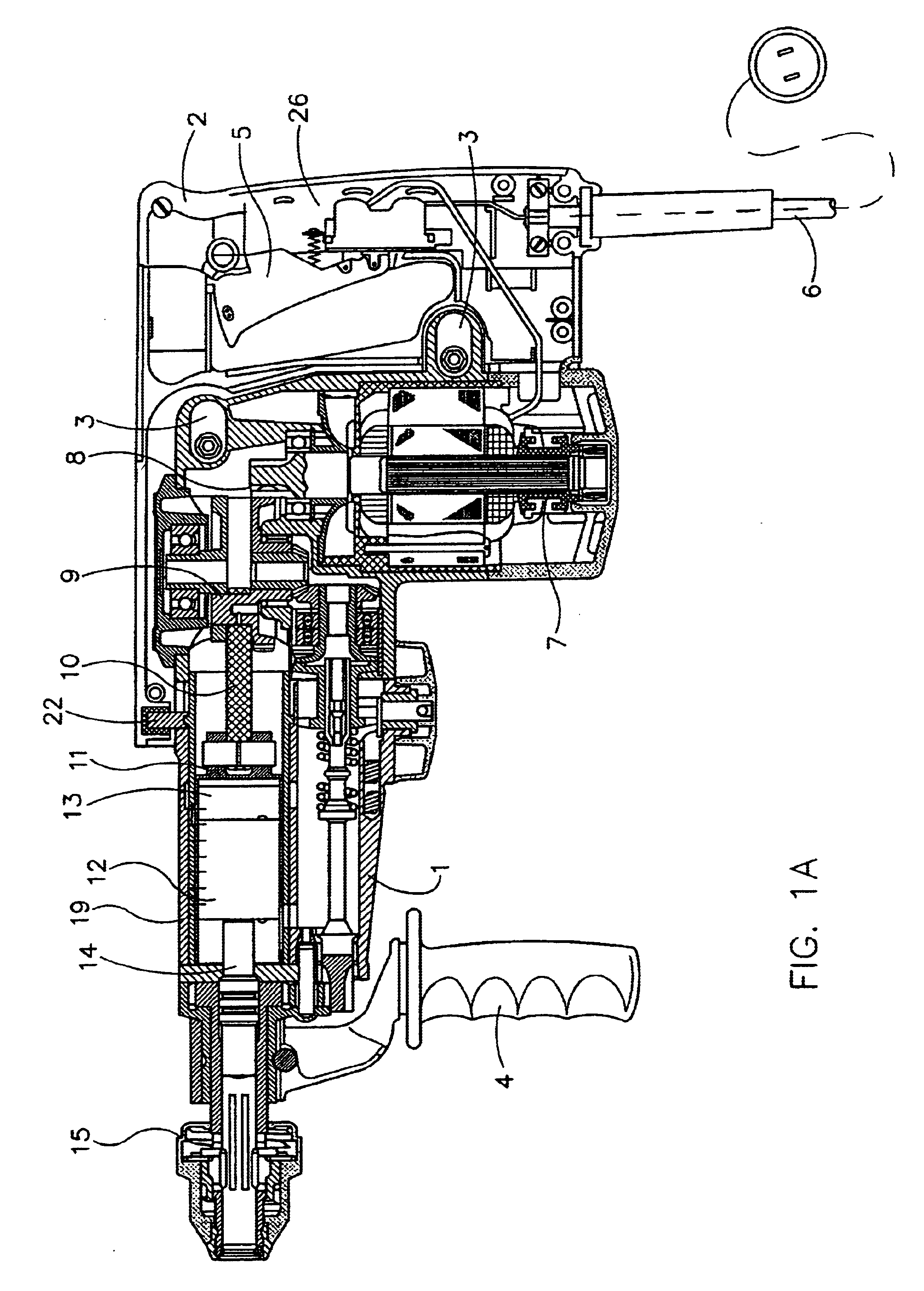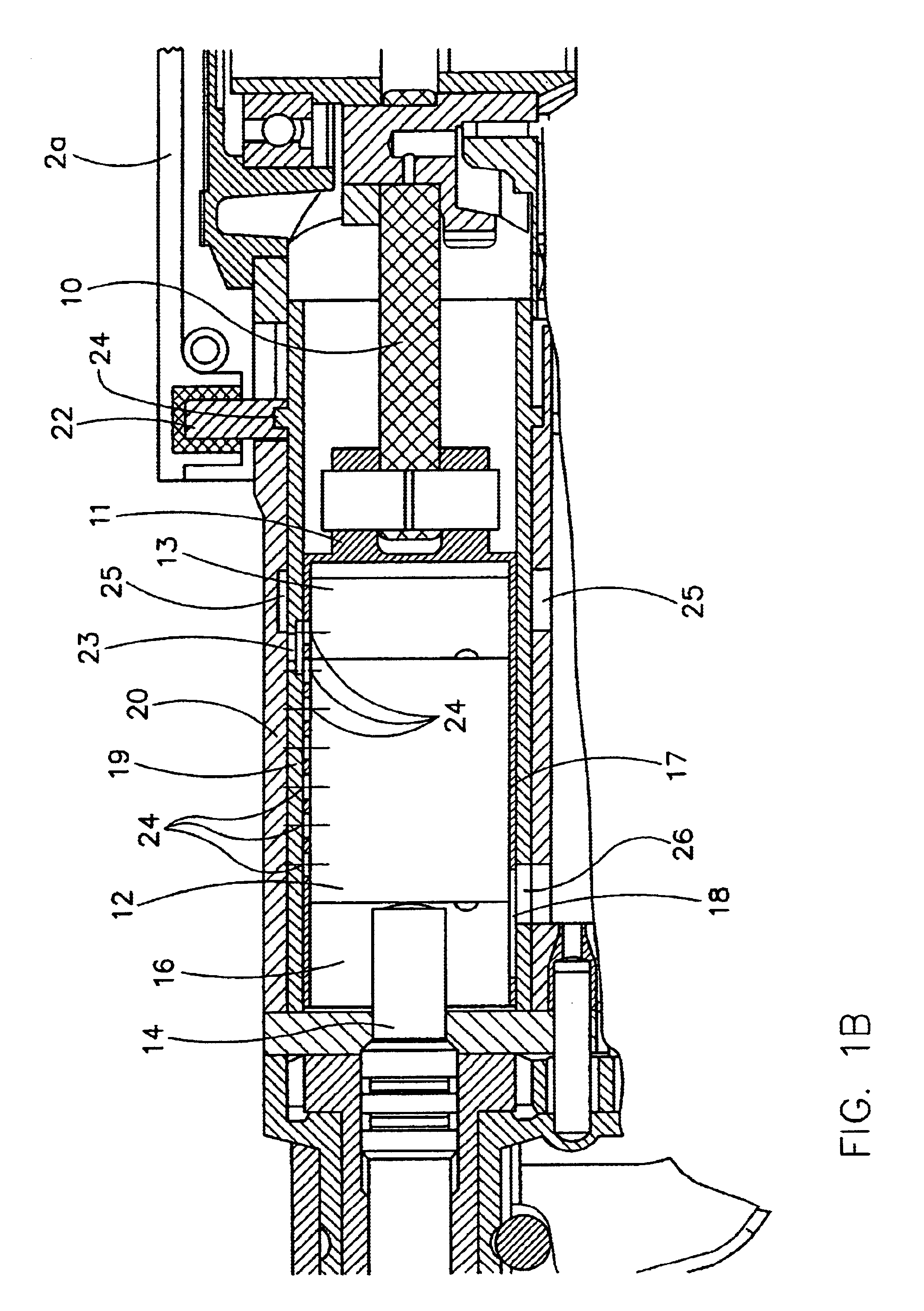Hammer drill and /or percussion hammer with no-load operation control that depends on application pressure
a technology of operation control and hammer drill, which is applied in the direction of portable power-driven tools, percussive tools, bulkheads/piles, etc., can solve the problems of preventing the rapid creation of a stabilizing centering, the danger of hammer damage to the operator or to the operator, and the inability to avoid unplanned jumping away
- Summary
- Abstract
- Description
- Claims
- Application Information
AI Technical Summary
Benefits of technology
Problems solved by technology
Method used
Image
Examples
Embodiment Construction
[0039]FIGS. 1A to 3B show the hammer according to a first specific embodiment in different operating states and different detail enlargements. The hammer according to the second specific embodiment is shown in FIGS. 4 to 5B. First, the hammer according to the first specific embodiment is described on the basis of FIGS. 1A and 1B.
[0040]On a hammer housing 1, a handle 2 is attached so as to be capable of axial displacement via spring systems 3. On the front end of hammer housing 1, an additional handle 4 is fastened, which however is not important for the present invention and serves only for the improved guiding of the hammer.
[0041]Spring system 3 can be for example an anti-vibration system for mitigating the vibrations and impacts—acting on handle 2 and produced by the air spring hammer mechanism or by the action of the tool—on handle 2, and thus on the operator's hand, which grasps handle 2 at a grasping point 2b. To the extent that such an anti-vibration system is already provided...
PUM
| Property | Measurement | Unit |
|---|---|---|
| pressure | aaaaa | aaaaa |
| pressure force | aaaaa | aaaaa |
| spring force | aaaaa | aaaaa |
Abstract
Description
Claims
Application Information
 Login to View More
Login to View More - R&D
- Intellectual Property
- Life Sciences
- Materials
- Tech Scout
- Unparalleled Data Quality
- Higher Quality Content
- 60% Fewer Hallucinations
Browse by: Latest US Patents, China's latest patents, Technical Efficacy Thesaurus, Application Domain, Technology Topic, Popular Technical Reports.
© 2025 PatSnap. All rights reserved.Legal|Privacy policy|Modern Slavery Act Transparency Statement|Sitemap|About US| Contact US: help@patsnap.com



